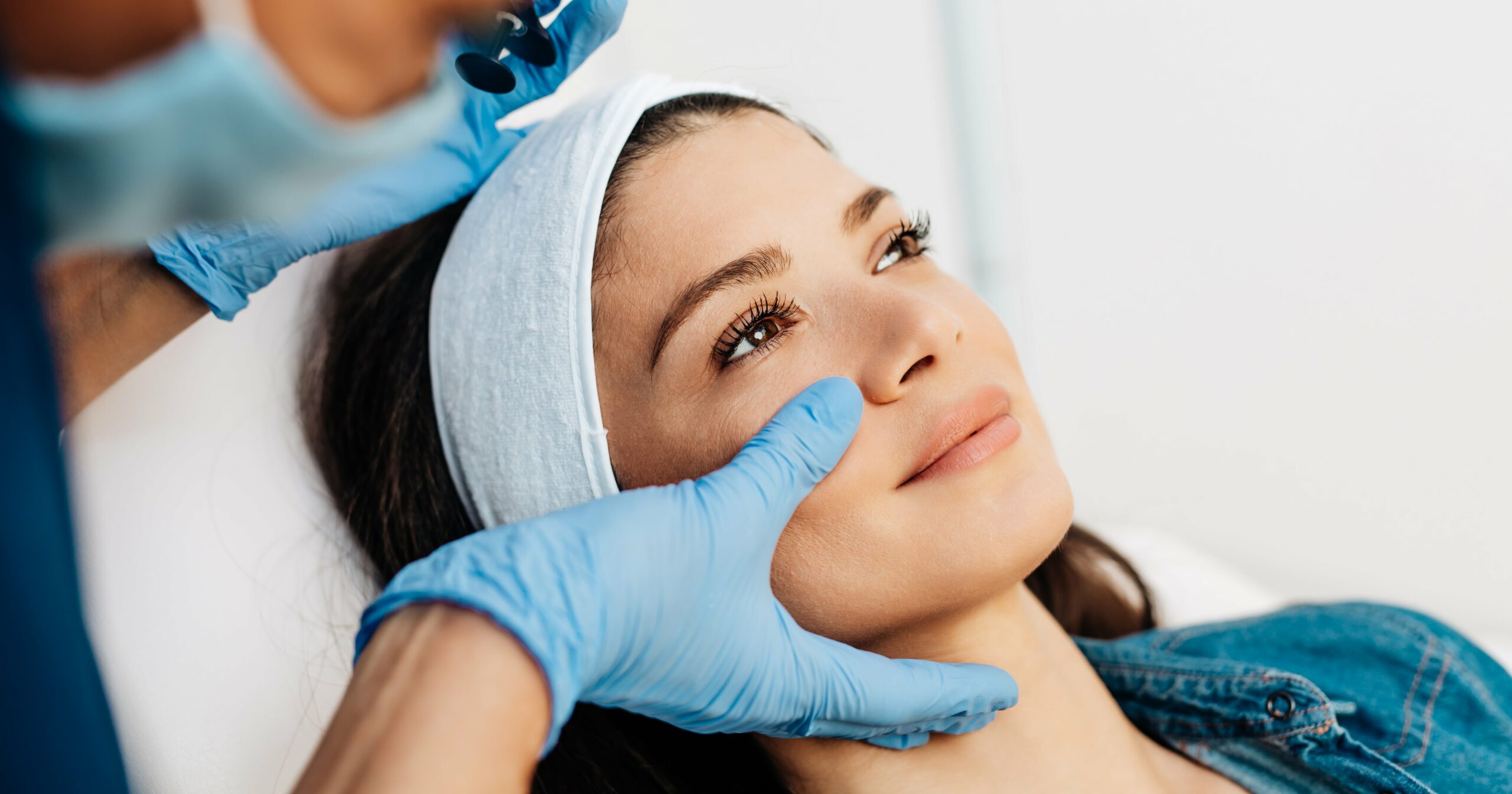Image Source: Getty/Royalty-free
As the use of Ozempic and other semaglutides become more popular for weight loss, there is a growing list of side effects that people are being warned about. From “Ozempic butt” to stomach paralysis, there are a host of concerns that are being revealed the longer that people take the drug. One of the more outward facing is “Ozempic face,” which is when there is a loss of facial fat from losing weight, resulting in a gaunt and sunken appearance.
For the latter side effect, in particular, people are turning to facial fat grafting to restore the area’s original volume. “Fat grafting is a wonderful way to correct Ozempic face,” plastic surgeon Deniz Sarhaddi, MD, tells PS. “Often, patients also need tissue tightening via a face and/or neck lift to fully correct everything, but typically these patients really benefit from replenishing the volume in the face that was lost to achieve a youthful appearance.”
Ahead, dermatologists explain what facial fat grafting is, how much it costs, the risks associated with the procedure, and more.
What Is Facial Fat Grafting?
The process with facial fat grafting is similar to the kind performed elsewhere on the body, but can be less severe. In fact, it’s often used as a natural alternative to dermal filler. “The fat is harvested from an area of the body, most commonly the abdominal area and upper thigh region,” double board-certified plastic surgeon Michael Somenek, MD, says. “This fat is then processed and injected into the areas of the face that have been determined preoperatively.”
Facial fat grafting is considered a minimally invasive procedure since the technique used is very similar to injecting filler with a cannula. However, Dr. Somenek notes that due to the injections going into multiple regions of the face, there is a higher likelihood of bruising afterward.
The good thing is that the downtime for facial fat grafting is very manageable. “It’s typically characterized by swelling and some degree of bruising,” Dr. Sarhaddi says. “I usually recommend not doing anything strenuous for two weeks to minimize this, but most patients are back at their daily routines within a couple days.”
How Long Does Facial Fat Grafting Last?
You will see the full results of a facial fat grafting procedure three months post-treatment and the results are permanent. “Because it’s your own tissue, once the transferred fat cells are incorporated, they will behave like they normally would in your body,” Dr. Sarhaddi says. “They will fluctuate with weight loss and gain just like any other part of the body.”
If for some reason you’re unhappy with your results, there is a ways to reverse it – though it’s not recommended. “It can be reversed through micro-liposuction, but it’s best to avoid doing anything that will need to be reversed,” Dr. Sarhaddi’s says. “It is recommended that the fat be injected conservatively to avoid overfilling and other concerns that some may have.”
Facial Fat Grafting Before and After
Facial Fat Grafting Cost
This procedure is not covered by insurance, so you will likely be paying out of pocket. “The cost depends on the geographical region and amount of areas injected,” Dr. Somenek says. “It will likely range from $5,000 to $15,000.”
How to Prepare for Facial Fat Grafting
Dr. Sarhaddi recommends that her patients not take any medication or supplements that are blood thinning at least a few weeks prior to the procedure. This includes Advil, Aspirin, fish oil, tumeric, and the like. “This helps to decrease the change of bleeding and bruising,” she says. “Additionally, don’t massage or ice the areas getting worked on.” You can also get a lymphatic massage no earlier than two to four weeks pre-operation to help with swelling. “The goal is to minimize complications and maximize fat survival and incorporation,” Dr. Sarhaddi says.
How to Find the Best Doctor for Facial Fat Grafting
It is best to go to a medical doctor who has extensive experience in or specialized in facial procedures. “I recommend seeing a surgeon who does facial surgery as a large part of their practice,” Dr. Sarhaddi says. “Most of these surgeons add fat grafting as a nice adjunct to their larger facial features for a great overall result.”
Be sure to also do a consultation before choosing your provider. “Meet with your doctor to better understand their process and explain your goals with the procedure,” Dr. Dr. Somenek says. “Understanding their aesthetic, take a look at before-and-after photos if needed and be sure to explain your choices clearly.”
Ariel Baker is the assistant editor for POPSUGAR Beauty. Her areas of expertise include celebrity news, beauty trends, and product reviews. She has additional bylines with Essence and Forbes Vetted.




